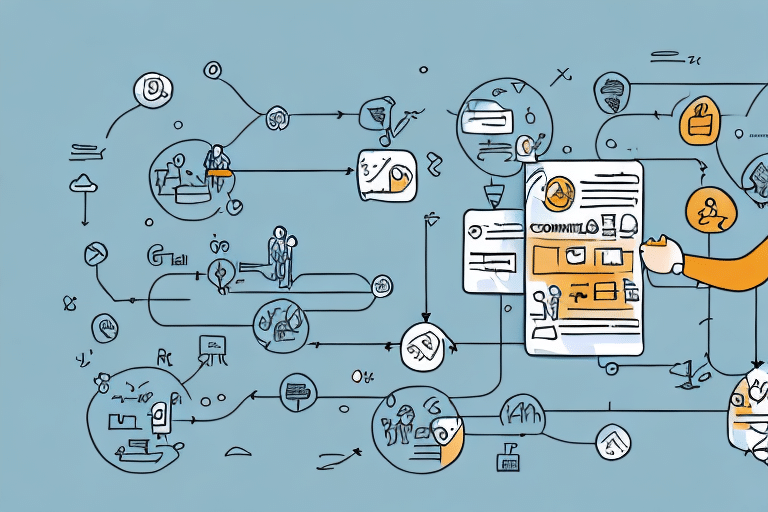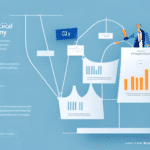Understanding the Importance of Customer Retention
Retaining customers is the backbone of any successful business. Studies show that the cost of acquiring new customers is five times higher than retaining existing ones. Focusing on customer retention strategies can significantly boost your bottom line and improve long-term growth prospects. Retaining customers leads to increased revenue, improved customer satisfaction, and greater brand loyalty. Satisfied customers are more likely to continue doing business with your company and refer others, reducing marketing costs and increasing profit margins.
Moreover, effective customer retention involves understanding customers' needs and preferences, continuously improving products or services, and creating a customer-centric business environment. Implementing loyalty programs, personalized communication, and exceptional customer service can differentiate your business from competitors and build a strong market reputation.
Measuring Customer Retention: Key Metrics and KPIs
Measuring customer retention rates is essential for tracking the success of your retention strategies and identifying potential areas for improvement. Key metrics include:
- Customer Retention Rate (CRR): Measures the percentage of customers who continue to do business with your company over a specific period.
- Customer Lifetime Value (CLV): Estimates the total revenue a business can expect from a single customer account.
- Customer Churn Rate: The percentage of customers who stop using your products or services during a given timeframe.
- Net Promoter Score (NPS): Gauges customer satisfaction and loyalty by asking customers how likely they are to recommend your business to others.
Regularly tracking and analyzing these metrics helps identify trends in customer behavior, enabling data-driven decisions to enhance retention efforts. Comparing your metrics against industry benchmarks and considering customer demographics provides a comprehensive understanding of your company's performance.
Identifying and Prioritizing Your Most Valuable Customers
Not all customers hold the same value for your business. Identifying your most valuable customers involves analyzing their lifetime value, purchase frequency, and average order value. Prioritizing these customers allows you to tailor retention efforts effectively.
By focusing marketing resources on retaining high-value customers, you can increase their loyalty and encourage repeat purchases, leading to a higher return on investment. Understanding what motivates your valuable customers enables you to offer personalized incentives and rewards that resonate with them.
Strategies to Identify Valuable Customers:
- Analyze purchase history and frequency.
- Assess customer engagement across different channels.
- Evaluate feedback and satisfaction levels.
Implementing a Robust Customer Relationship Management (CRM) System
A Customer Relationship Management (CRM) system is crucial for enhancing customer retention by managing and analyzing customer interactions and data. A CRM system helps in:
- Identifying customer needs and preferences.
- Personalizing marketing efforts and communications.
- Improving customer service through centralized data access.
- Tracking customer interactions across multiple channels for a seamless experience.
Furthermore, a CRM system streamlines the sales process by providing insights into customer behavior, aiding in lead identification, and tailoring sales approaches to individual customer needs. This leads to increased productivity and revenue growth.
Personalizing the Customer Experience with Data-Driven Insights
Personalization is critical in today's competitive market. Customers expect companies to understand their individual needs and provide tailored recommendations. A data-driven approach enables businesses to:
- Segment customers based on behaviors and preferences.
- Customize marketing messages and product recommendations.
- Enhance customer service by anticipating customer needs.
Personalization increases customer loyalty and satisfaction by making customers feel valued and understood. However, it is essential to handle personalization ethically, ensuring transparency in data collection and giving customers the option to opt out.
Designing Effective Email Marketing Campaigns for Retention
Email marketing remains a powerful tool for customer retention when campaigns are relevant, engaging, and personalized. Effective strategies include:
- Segmenting email lists based on purchase history and preferences.
- Automating emails for timely communication.
- Rewarding loyal customers with exclusive offers and discounts.
- Recommending related products and soliciting feedback to enhance engagement.
Ensuring that emails are mobile-friendly is also crucial, as a significant portion of users access emails on smartphones and tablets. Responsive design, clear subject lines, and optimized content for mobile devices can increase open and engagement rates, thereby improving retention.
Creating and Managing Loyalty Programs
Loyalty programs reward customers for repeat purchases, fostering long-term loyalty. Effective loyalty programs should:
- Offer desirable and attainable rewards tailored to customer preferences.
- Maintain a balance in the frequency and timing of rewards to keep them valuable.
- Use point systems, exclusive discounts, or special promotions to incentivize repeat business.
Understanding customer motivations and preferences is key to designing loyalty programs that resonate, ultimately leading to increased customer retention and higher lifetime value.
Providing Exceptional Customer Service
Exceptional customer service is a cornerstone of customer retention. It leads to increased satisfaction and loyalty by ensuring that customer needs are met promptly and effectively. Key aspects include:
- Delivering consistent and timely support across all channels.
- Training customer service representatives in empathy, active listening, and problem-solving.
- Empowering the customer service team to resolve issues independently.
- Using customer interactions to gather feedback and identify improvement areas.
Investing in customer service excellence fosters a positive customer experience, encouraging repeat business and referrals.
Leveraging Social Media and Referral Programs
Connecting with Customers through Social Media
Social media platforms are essential for connecting with customers and increasing engagement. Businesses can use social media to:
- Share valuable content and updates.
- Offer promotions and exclusive deals.
- Solicit and respond to customer feedback in real-time.
- Build a community around the brand, fostering stronger customer relationships.
A robust social media presence helps establish a personal connection with customers, enhancing retention rates.
Expanding Your Customer Base with Referral Programs
Referral programs incentivize existing customers to refer new ones, leveraging word-of-mouth marketing. Effective referral strategies include:
- Offering rewards or discounts for successful referrals.
- Making the referral process simple and accessible.
- Promoting referral programs through various marketing channels.
Referral programs not only expand your customer base but also enhance retention by rewarding loyal customers for their advocacy.
Continuous Value through Product Enhancements and Feedback Management
Providing Continuous Value with Product Enhancements
Continuously improving products and services to meet evolving customer needs is vital for long-term retention. Strategies include:
- Regularly updating features based on customer feedback and market trends.
- Introducing new products or services that complement existing offerings.
- Ensuring high quality and reliability in all product enhancements.
Demonstrating a commitment to providing ongoing value keeps customers engaged and satisfied.
Managing Negative Feedback and Complaints
Negative feedback and complaints are opportunities to enhance customer satisfaction and retention. Effective management involves:
- Listening to and acknowledging customer concerns promptly.
- Implementing solutions to address and rectify issues.
- Using feedback to identify and address systemic problems.
- Communicating transparently with customers about the steps being taken.
Addressing negative experiences effectively can turn dissatisfied customers into loyal advocates.
Enhancing Retention through Content Marketing and Upselling
Developing a Winning Content Marketing Strategy
Content marketing engages and retains customers by providing valuable, relevant, and consistent content. Effective content strategies include:
- Creating educational, entertaining, or inspiring content tailored to customer interests.
- Establishing the brand as a thought leader within the industry.
- Personalizing content based on customer behavior and preferences.
- Utilizing various content formats such as blogs, videos, infographics, and webinars.
A strong content marketing strategy fosters long-term engagement and loyalty among customers.
The Role of Upselling and Cross-Selling
Upselling and cross-selling enhance customer retention by increasing the value provided to customers. These strategies involve:
- Upselling: Encouraging customers to purchase upgraded or premium versions of products or services.
- Cross-Selling: Offering complementary products or services that enhance the customer's original purchase.
When executed correctly, upselling and cross-selling improve the overall customer experience and increase their lifetime value.
Conclusion
Customer retention should be a top priority for businesses aiming for long-term growth and success. By implementing strategies such as understanding customer value, utilizing CRM systems, personalizing experiences, and providing exceptional service, businesses can significantly improve retention rates. Additionally, leveraging social media, referral programs, and effective content marketing further strengthens customer loyalty. Continuously enhancing products and managing feedback ensures that customers receive ongoing value, fostering a loyal and engaged customer base that drives sustained business success.




















